“By education I mean an all-round drawing out of the
best in the child—body, mind and spirit.”
—Mahatma Gandhi
DISTINCTIVES
Making the Right Decision
There are thousands of nonprofits in India now seeking CSR and foundation financial grants so as to support and further their operations. In terms of quality, these organisations run the gamut from being large, well-established, and proven effective, to being shell organizations or questionable start-ups with little history and unproven leadership. For simplification purposes, herein we’ll refer to all nonprofits in India seeking CSR and Foundation grants as “NGOs.”
In making recommendations and decisions about where to best allocate a corporation’s or Foundation’s nonprofit giving, key questions for granting executives to ask about all NGOs seeking funding would likely include the following:
I. What are the quality and the impacts of the NGO’s program(s)?
Are impacts meaningful, verifiable, feasible and durable? What documentation is in hand to substantiate representations being made in this regard by the NGO’s leadership?
II. What do I know about the qualifications, the integrity, and the relationships of the NGO’s leaders and operating teams?
What are the leaders’ professional backgrounds, what are their mission-critical skillsets, and who are their mission-critical allies and contacts?
III. How well, and for how long, has the NGO’s leadership demonstrated high-quality financial-management skills and financial reporting skills, in addition to legal compliance?
Are there enough years of historic documentation so as to provide assurance?
Once a granting-making executive can gather enough positive data and opinions related to these three areas of information, then there is safety in going forward. Without sufficient positive information up front, caution is, of course, warranted.
Hope Academy’s Positive Distinctives
Thorough due diligence will reveal Hope Academy should receive highest marks on all of the criteria stated above. Within this website we have provided a vast amount of information which attests to the quality and impact of our work, attests to the quality of our leadership, and attests to the depth and quality of our financial management and documentation. We believe that this blending of attributes makes Hope Academy a very appealing and safe environment for consideration for CSR and Foundations grants.
Educating The Whole Child
But Hope Academy provides added attributes as well…a combination of facets to our work that greatly widens the impact of CSR and Foundation funding. These facets relate first to the uniqueness of Hope Academy’s approach to providing diverse educational programs for all the children whom we serve. Core areas that Hope Academy nurtures include the following:
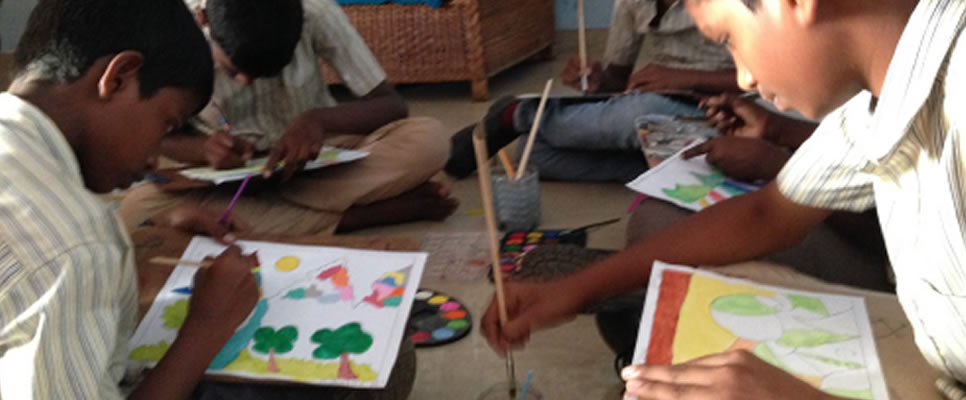
The ability to freely express ones creativity using a variety of art mediums promotes strong emotional and psychological development. Learning to play music boosts self-confidence and enhances reading skills.
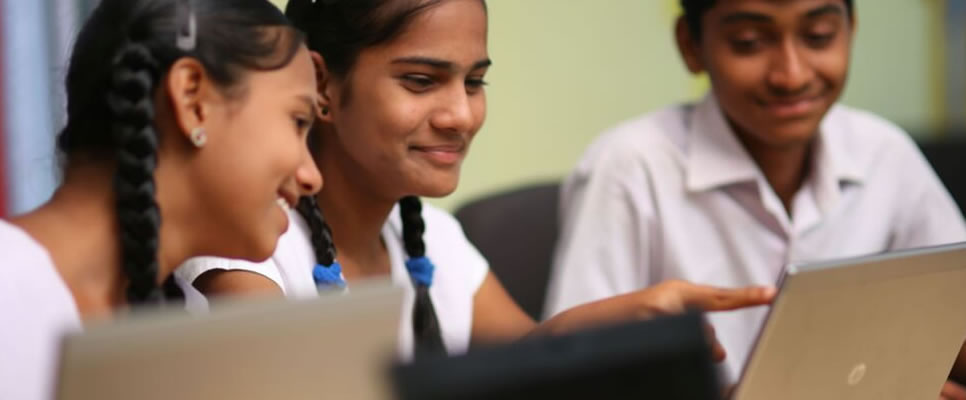
Students are taught the skills to successfully work together with learning partners.
Working together to solve real-life problems develops students’ critical thinking and communication skills. They come to understand the value of teamwork by sharing their ideas, getting feedback, and experiencing the great satisfaction that comes from their team’s success.

To prepare Hope Academy students for meaningful and productive careers, they are challenged to articulate their learning to multiple audiences.
When such articulation is coupled with project-based learning—the opportunity to dream, to plan, to build, and to present a finished project—students are instilled with confidence and are better prepared for success within higher education and work environments.
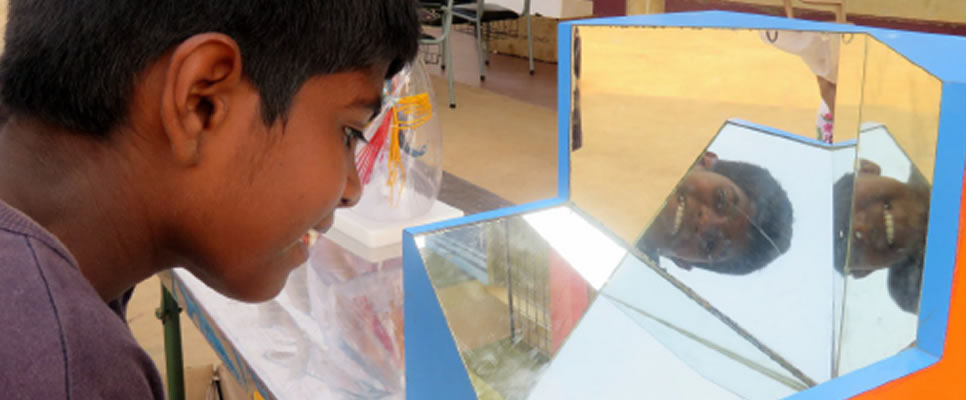
Too often we give children answers to remember rather than problems to solve. Hope Academy is building a learning environment in which students can be innovative thinkers, learners and makers as they prepare for the future.
Increasing access to quality hands-on STEM education is inspiring interest in—and developing increased aptitude toward—science and math. We have contracted with a non-profit to supply Lab-in-a-Box experiments, as well as professional development for science teachers.
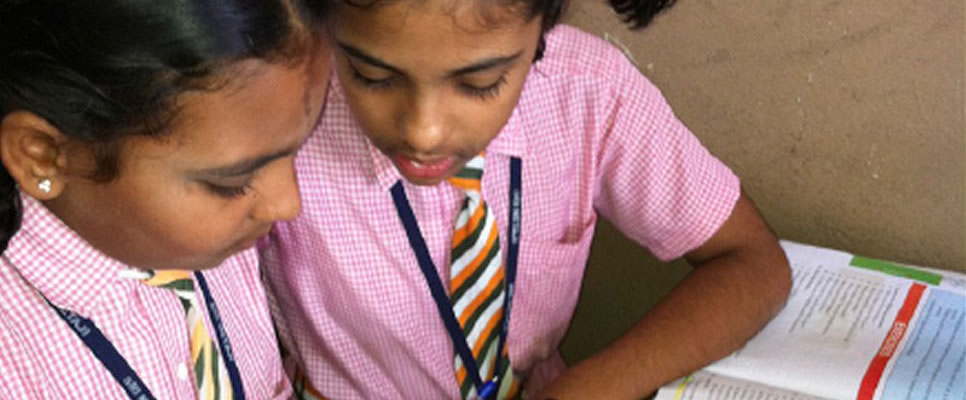
Students consistently exceed basic recall tasks in Hope Academy’s unique learning environment. To prepare students for today’s competitive world, they are exposed to deeper understanding and higher levels of thinking.
Stanford Mobile Inquiry-based Learning Environment (SMILE) is educational technology that engages students in inquiry, critical reasoning and problem solving. SMILE is designed to push for higher-order learning skills, which include applying, analyzing, evaluating and creating.

We strive to inspire students to be thinkers, researchers, and reflectors. We prepare our students to be life-long learners.
For example, each Hope Academy student Std IV and above has their own “Foldscope” with which to independently explore their own ”microcosmos.”
NOTE: Foldscope is the ultra-affordable, paper microscope developed at Stanford University. It is extremely portable, durable, and provides optical quality similar to conventional research microscopes (magnification of 140X and 2 micron resolution).
(SEE: www.foldscope.com)

Hope Educational Society owns slightly more than 6 acres of land. This amount of land is more than sufficient to permit the development of a student garden on site.
We need to start early to teach our children to love, value and tend the soil—as well as the life and produce it brings.

Inclusive education aims at integrated development of children with special needs and typical children through mainstream schooling. All children—whether they are disabled or not—have the right to education; they are the future citizens of India. For Hope Academy, inclusion is a value to be followed.
By use of accessibility ramps and an elevator in HA (2.0), we have the opportunity to make this entire school accessible to children with special needs. (SEE: design plan to provide for inclusive classrooms.)
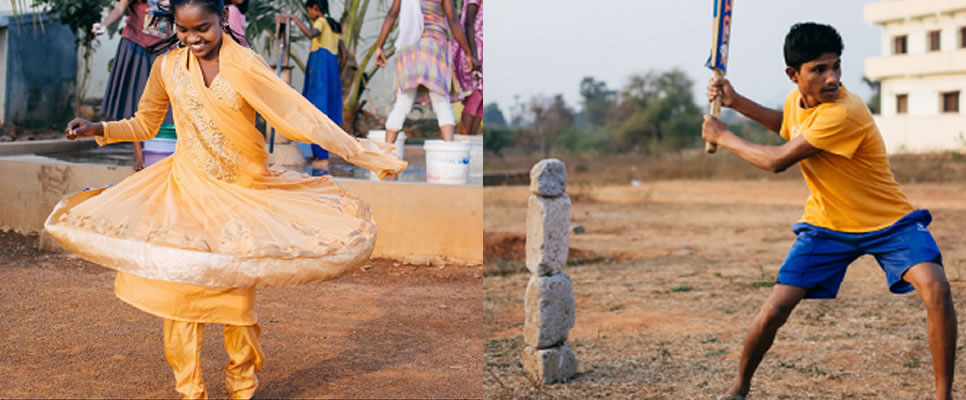
The ability to run and play is not only key to good overall health but improves balance, coordination, and higher cognitive functions.
HA students learn that ample physical activity, healthy choices and balanced nutrition will set them up for longer and healthier lives.

There is nothing like a great friend! Our students learn to work together, to share, and to help one another. They develop into compassionate, generous members of their communities.

It is important for students to have times of quiet and peace, times for personal reflection and opportunities to seek hope and meaning for their future. We explore topics such as identity, community and integrity. We discuss the benefits and costs of personally emphasizing service to others in work and family. We enable our students to reflect on, freely consider, and come to their own informed conclusions about religious beliefs and spiritual practices. Our intention is to live out the essential characteristics of Hope Academy—while demonstrating sincere respect for the diversity that is found within our student body and community.
Benefitting The Wider Community
In addition to the life-changing benefits which Hope Academy will ultimately bring to 800 Indian children annually, another major differentiator is our plan to also provide substantial benefits to the communities which surround Hope Academy. Examples of our outreach programs include the following:
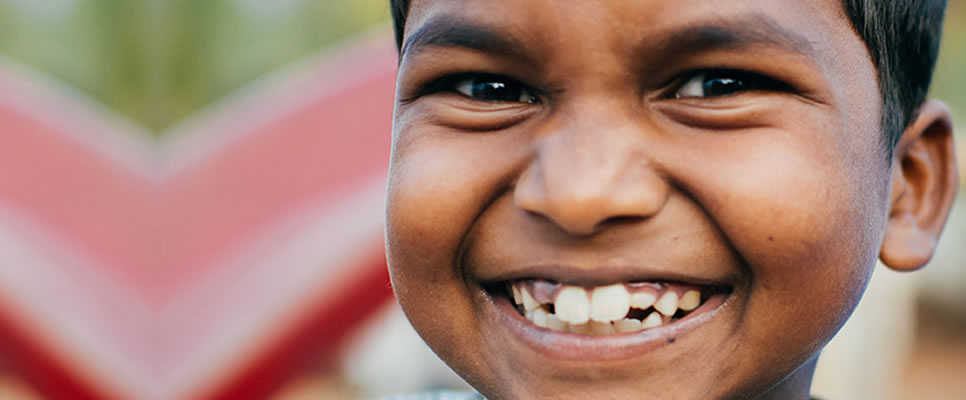
In addition to providing top-quality education for 120 orphanage (scholarship) students and 600 community (tuition paying) students, Hope Academy plans to admit and pay scholarships for 80-100 of the most underserved children from the surrounding community.
These student numbers have been incorporated into Hope Academy’s Business Plan from the outset of the project.
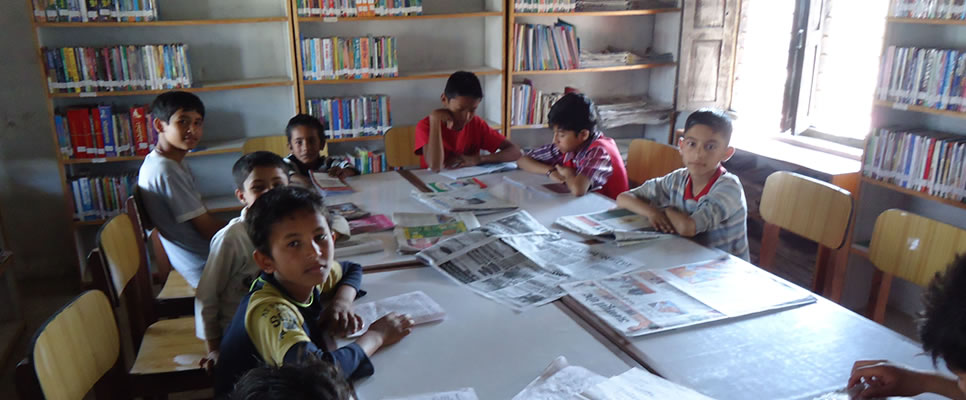
Hope Educational Society has committed to contribute 5.7 lakh rupees toward a library for the nearby village of Vedulanarava. This will be Vedulanarava’s first community library—ever.
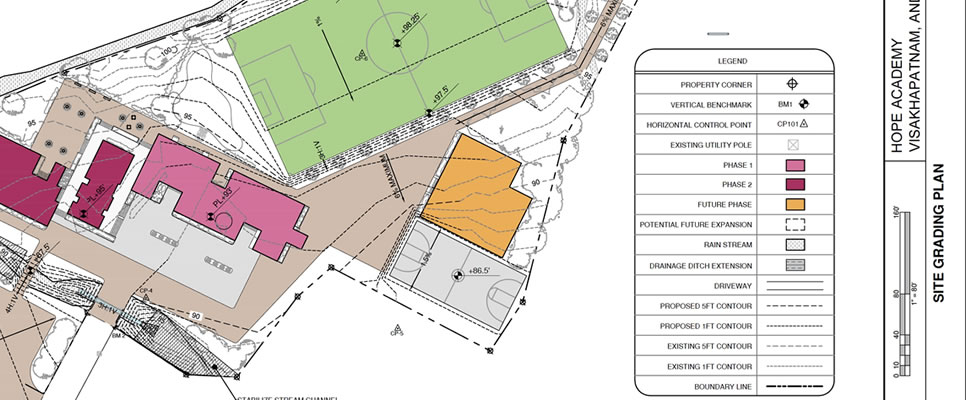
Although the closest school sports field is 25 km distant, this school doesn’t permit field use for community events—as Hope Academy will. A large, graded berm on the uphill (northeast) side of Hope Academy’s sports field will provide excellent seating, viewing and listening during sporting and community events.

Although the closest school sports field is 25 km distant, this school doesn’t permit field use for community events—as Hope Academy will. A large, graded berm on the uphill (northeast) side of Hope Academy’s sports field will provide excellent seating, viewing and listening during sporting and community events.
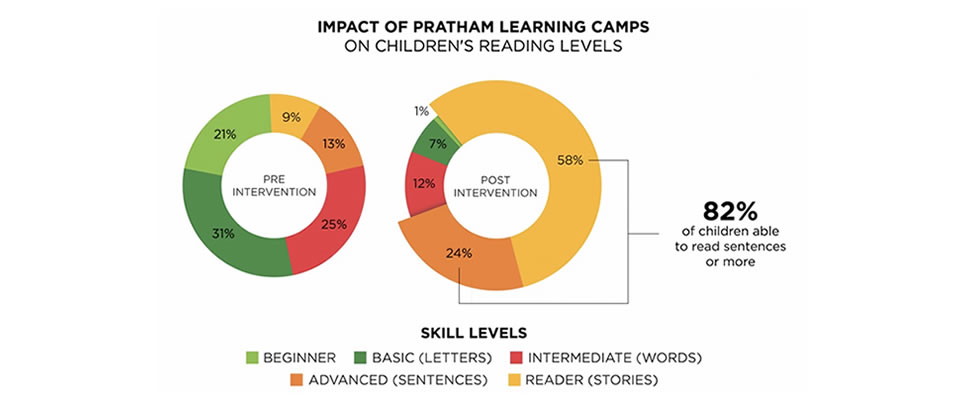
Pratham’s “Teaching at the Right Level” (TaRL) strategy has been evaluated by the Abdul Latif Jameel Poverty Action Lab, an outgrowth of MIT’s Department of Economics, through randomized control trials six times in the last ten years. They have found Pratham’s approach to be effective in both Pratham teacher-led classrooms and learning camps staffed by trained community volunteers or teachers.
Hope Academy will be pleased to host language camps for members of our community led by Pratham-trained volunteers.
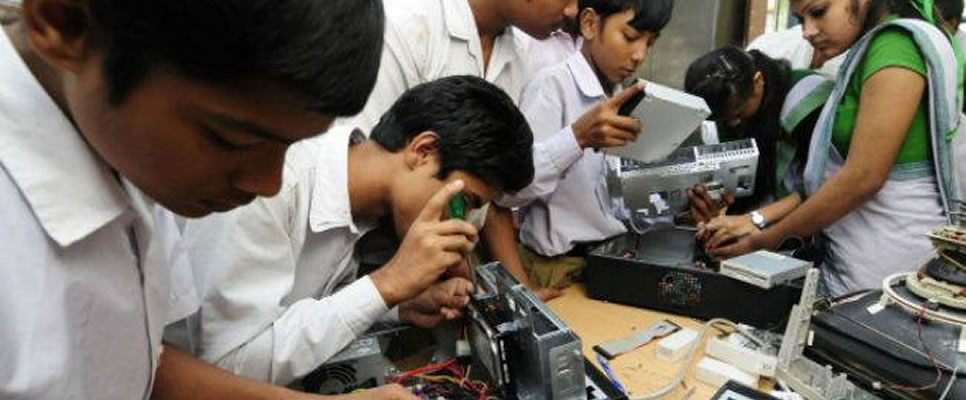
As India’s economy grows, there is an urgent need to produce technicians of international standard to meet industry’s rising demand for skilled manpower. However, the vocational education stream in India is quite small, enrolling less than 3 percent of students at the upper secondary level. Analysis also shows that the Vocational Education and Training system is not responding to the needs of the labor market.
Given an opportunity and the right alliances, Hope Academy would like to expand into providing skill-building workshops and entrepreneurship training.